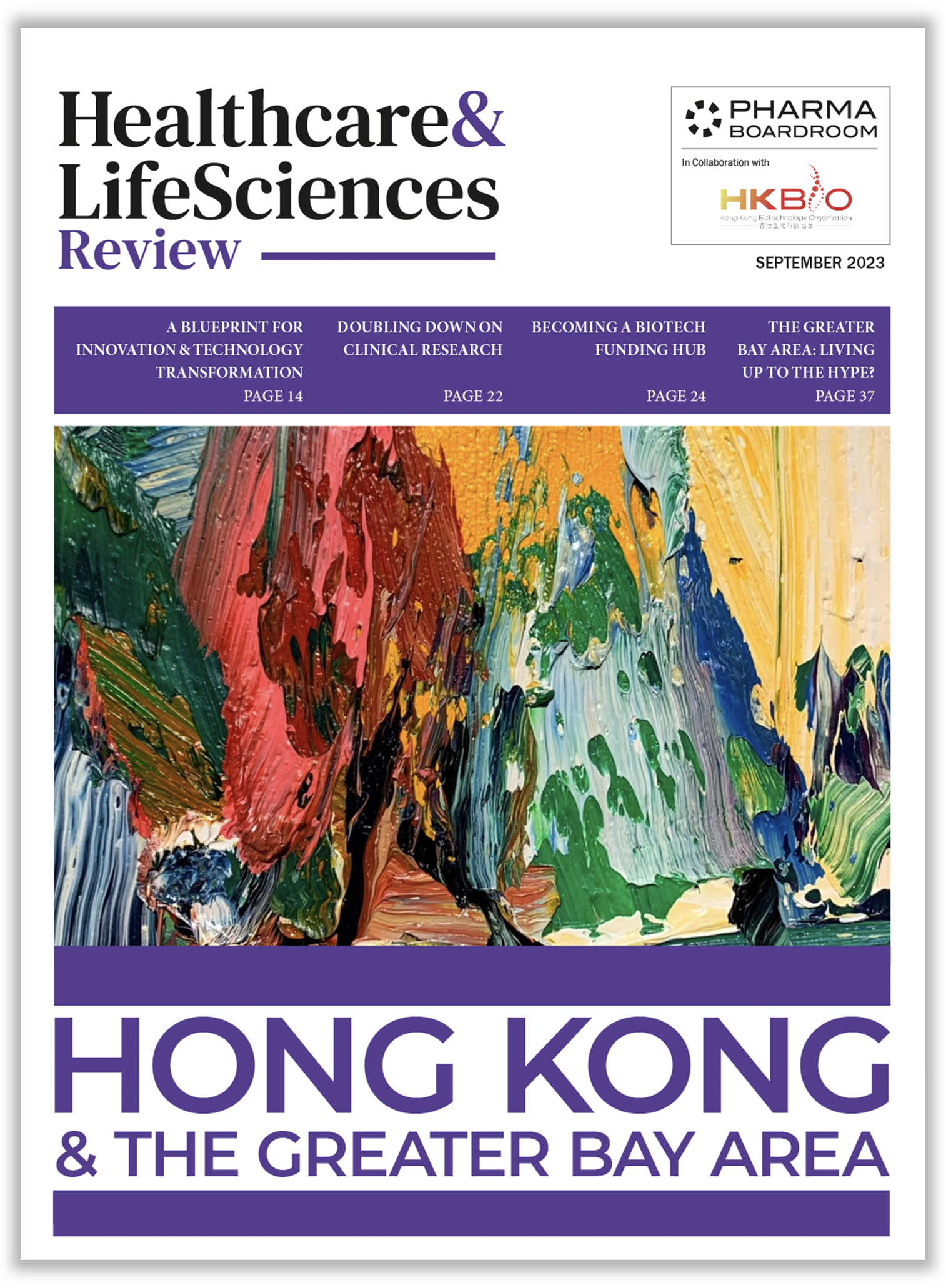Would you give our readers an insight into the government’s attempts to foster a better environment for FDI in Malaysia?
Over the last year, the significant development has been the emergence of the Economic Transformation Programme (ETP). Through this initiative Malaysia is attempting to catapult itself out of the ‘middle-income trap’ to create a high-income society.
Over the past 20 years there has been a minimal increase in wages and this is mainly due to Malaysia’s heavily subsidised economy. Over this time inflation has increased significantly above the official 3% figure. For the average citizen, there has been significant inflation in the price of goods and services, whilst salaries have remained fixed. The government is now looking at implementing a minimum wage policy beginning with the minimum wage council and AMCHAM supports this effort.
The government is now under a lot of pressure to improve the delivery system in order to attract FDI. However, the government recognises that FDI is not enough and the system needs to be made more transparent.
Around 5-6 years ago there was an attempt to set up what was known as the Biovalley. This did not succeed because market access and government procurement was insufficient. Secondly, the resources and biodiversity were there, but there was a lack of talent and human capital. The most problematic issue was policies pertaining to the employment of expatriates and the non-transparent ways in which business was conducted. The government was simply not responsive enough to creating a business-friendly environment, suited to a high-capacity knowledge workforce. They had an archaic 1970s/80s manufacturing mindset where percentage deals were simply offered to industry but not negotiated.
Malaysia is now trying to amend the situation. The government is talking to the pharma MNCs and seeking their greater integration into the Malaysian economy. Indeed the government is reproaching the MNCs for being only traders, who do not transfer technology, capacity or knowledge to Malaysia. As a result, there is therefore a move towards generics. They are trying to reduce costs by switching to generics because healthcare is heavily financed in Malaysia and it is controversial to introduce healthcare financing in any form at the moment.
Do you see the possibility that MNCs would reduce their product offering to Malaysia if this trend towards generics continues?
The Minister is adamant that Malaysia must stick to the Economic Transformation Programmes (ETP) to lift Malaysia out of the middle-income trap. This can either be done through the Western multinationals – the preferable option – or through Chinese and Indian companies. I believe the Minister is soon going to revive dialogues with the MNCs to foster greater investment in Malaysia. However this is at the highest tier. Whether this positive attitude towards rapprochement penetrates down to the lower tiers of the civil service is unclear. However the overall direction is set.
The Ministry of Health is looking for greater investments from pharma companies. However, they must realise that it will be challenge to regain confidence particularly for a small market like Malaysia where the economies of scale to produce for the local market is small. The second option for economic development would therefore be to increase bioequivalence studies and clinical trials in Malaysia and create joint ventures between branded generics and local companies. Some of the pharmaceutical companies are bringing 20-30 molecules and are looking for local manufacturers.
Under the ETP there is not going to be ambitious domestic vaccine and drug development. The government is realistic about these possibilities. However, in order to create this link between MNCs and local companies, the government needs look at data exclusivity regulation. The Minister is examining the possibility of putting this regulation into legislation so that it becomes fully enforceable.
In order to attract business, what should Malaysia represent and what would be its strength in drawing companies away from its rivals in the region such as Singapore and Thailand?
Singapore goes for very high-end medical tourism – the top tier price range. Malaysia on the other hand has a combination of midrange treatments and great tourist destinations. Malaysia therefore offers more of a package in medical tourism.
In terms of investment into pharmaceuticals, Malaysia is pushing bioequivalence and attracting branded generic companies to manufacture locally. However to reassure the MNCs and to develop local companies they need to deal appropriately with the issue of contraband and counterfeit medicines. The government should therefore increase enforcement.
Why is the black market for drugs so pervasive in Malaysia and how can it be addressed?
It is simply a matter of enforcement. Legislation is already strong, with the exception of data exclusivity which needs immediate assessment. It must become a strictly enforceable directive. Pharmaceutical companies are not the only companies targeted. The list of counterfeits includes software, cigarettes, beer. There was recently a counterfeit/contraband workshop at AMCHAM which was packed with people trying to understand how other countries have achieved reduction in contraband. The capacity, training and knowledge is not adequate for proper enforcement.
The government is also looking towards the MNCs to help.
You mentioned that in the late 1970s there were certain archaic regulations preventing MNCs entering the market. Has this barriers been addressed now?
There have been exemptions for companies which were 100% US-based therefore regulations such as the Bumiputra equity-share requirement has not been applied to these companies. They were exempted on the basis that they brought in investment. However, it does become a consideration when these companies consider companies lower down the supply chain. When MNCs consider local manufacturers and service companies who do have bumiputra requirements they are concerned that they will receive sub-standard products and services. This would naturally compromise their drugs.
Secondly, the government procurement process is a problem for multinational pharma companies. There is too much bureaucracy and the process is slow as a consequence.
Thirdly, healthcare financing is highly particular to Malyasia. Multinationals are ready to assist the government in helping them move towards a co-payment or other form of system such as the insurance scheme of Australia. The trend for the time being points towards a generic base.
How willing are local companies to partner with international pharma companies?
For as long as I have been with Amcham which includes time I spent here 7 years ago. 7-10 years ago the relationship between local companies and MNCs was adversarial. At that time AMCHAM held a series of conferences where local stakeholders and the MNCs were brought together to discuss data exclusivity. We brought in lawyers from Europe to give talks and we tried to explain to figures from the Drug Control Authority that data exclusivity was not an extra patent but a necessary part of a country’s patent protection. Local companies objected strongly at the time and this animosity between the two players was really based on attaining market share.
The situation has changed now. The lack of patent protection discouraged MNCs from investing in Malaysia and transferring technology, knowledge and the drugs themselves. The local companies have realised that their antipathy to stronger patent protection prevented them from having access to the resources of the MNCs. Without the first tier players there was no knowledge transfer, experience transfer and talent transfer. Similarly, it is far easier for a generic company to market a product which has been marketed by a major multinational company than to start from scratch. Local companies have therefore realised their mistake and are seeking to come to terms with the MNCs.
This presents a clear window of opportunity in the field of branded generics. This potentially pleases all the stakeholders including the local companies who can sell products, the government which is brining medicines into the country and the MNCs who have greater access to the market. Generic manufacturing is the way forward however this type of collaboration is still new. Amcham is doing its utmost to bring MNCs together with government and local companies. However MNCs will remain cautious in case of radical changes in the government’s policy.
The perpetual mission of Amcham is to promote bilateral ties. The department of commerce is part of the US-embassy and is there to promote FDI. Amcham in comparison is a lobby and advocacy platform.
Amcham fully supports the Economic Transformation Programme in Malaysia. The Chamber also supports the Trans Pacific Partnership aggremeents. Amcham will be engaging to improve intellectual property protection and create a more condusicve enfortnament for government procurement.
What is Malaysia’s key strength of Malaysia for foreign companies to settle here?
As much as I criticise the education system in Malaysia on behalf of my children, it is effective in promoting ethnic diversity and societal resilience. Furthermore, the ethnic diversity of the workforce creates a flexible and adaptable talent pool. Human resources would be the main asset of the country.
The trouble at the moment is that local companies who operate do not see themselves as multinational companies even though they are. There therefore needs to be a mind-set change among local companies in Malaysia. The multinationalisation of Malaysian companies is the next step in Malaysia’s development.







